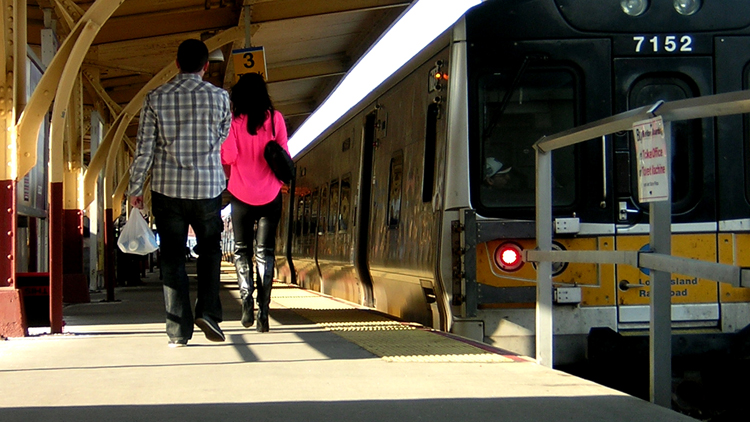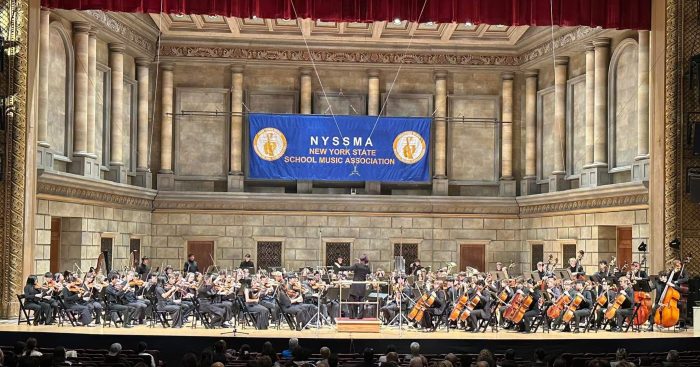The Long Island Rail Road continues to fall short of its self-imposed goal for on-time performance thanks to thousands of trains that were late, canceled or terminated, a New York State comptroller’s report has found.
The LIRR saw a slight improvement from 2015 to ’16, but the 17,951 late or canceled trains last year still kept the railroad from meeting its system-wide target of 94 percent of trains being on time—even though the on-time percentage goal was lowered one point two years ago.
“While the LIRR reports that only a relatively small percentage of trains were late or canceled, too many commuters had a different experience,” New York State Comptroller Thomas DiNapoli said.
DiNapoli’s office found that the on-time performance of the LIRR—the nation’s busiest commuter railroad—was 92.7 percent, disrupting an estimated 7.5 million riders and resulting in an estimated $60 million loss in productivity. The LIRR had 89.3 million riders last year, its most since 1949.
The report was released days after a train derailment in Penn Station in Manhattan resulted in a week of reduced rush-hour LIRR service while repairs were made—the second time in a two-week span that there was such an incident at the railroad hub run by Amtrak.
LIRR considers trains to be on time if they arrive within 5 minutes and 59 seconds of the scheduled arrival time. The railroad’s best year for on-time performance came in ’09, when it hit 95.2 percent.
The report found that peak trains using Penn Station were nearly twice as likely to be late or cancelled as trains to and from the Atlantic Terminal in Brooklyn. Trains destined for Penn Station between 8:30 a.m. and 9:30 a.m. were twice as likely to be affected than other morning peak trains. Those leaving Penn Station between 6 p.m. and 6:30 p.m. were late or cancelled 20 percent of the time.
Causes of delays and cancellations can include harsh weather, police investigations, or, as was the case last week, a train on a railroad other than the LIRR derailing in Penn Station. The report found that the LIRR was responsible for 30 percent of its delays and cancellations last year. The cause in those cases were mostly attributed to mechanical failures with trains or emergency repairs needed for tracks and signals.
Local officials urged the railroad to address the issues.
“Every day I hear from constituents that the constant LIRR cancellations and delays is the worst they have ever seen,” said New York State Sen. Todd Kaminsky (D-Long Beach). “This audit is a much more accurate reflection of the incredible hardships commuters face on a regular basis. Now that the curtains are pulled back, the MTA needs to get to work tackling these problems so that commuters can get the service they deserve.”
Beth DeFalco, an MTA spokeswoman, said the LIRR is working to improve its performance through capital projects that will increase its ability to run more trains.
“We are spending billions of dollars to improve the LIRR, most notably with the new Main Line Third Track and Double Track which will increase capacity, reduce delays, and improve safety,” she said. “As recent events show, not all delays are under our control, however we are working to improve the maintenance procedures and protocols at Penn Station to ensure the best service possible.”
The Long Island Rail Road Commuter Council thanked the comptroller for issuing a “thorough report” on the on-time performance but said the findings did not go far enough.
“What is not captured is the full impact of these late and canceled trains on the rider,” said LIRRCC Chair Mark Epstein. “A missed connection means riders are not on time to work even if the original train made up time and was on time at the end. A passenger-based metric would allow the LIRR to relate delays to lost economic value and to link performance improvements to an analysis of costs and benefits.”






























